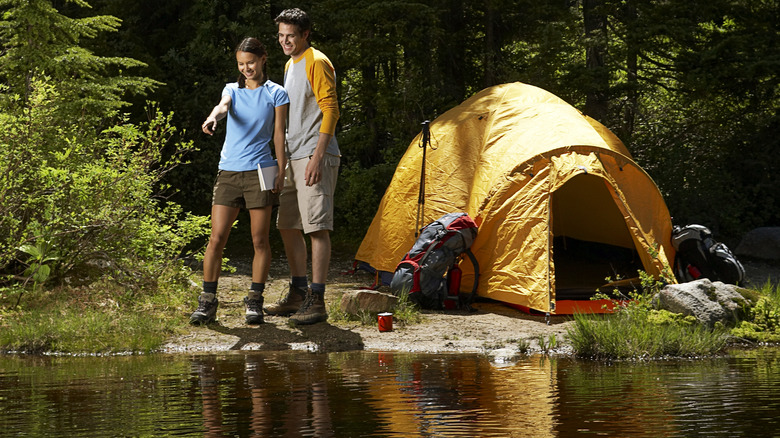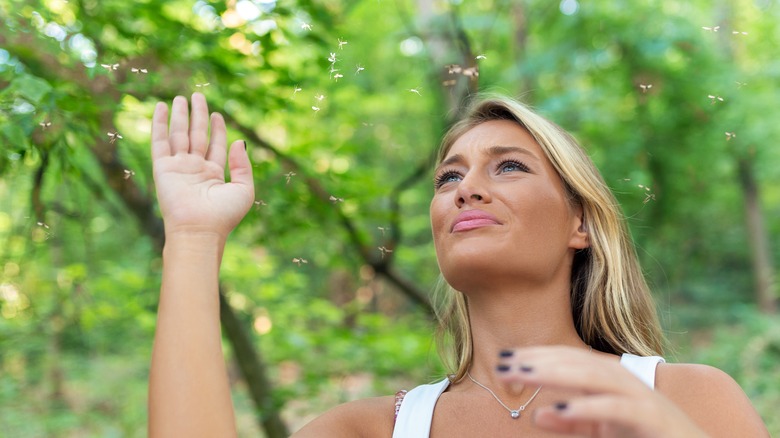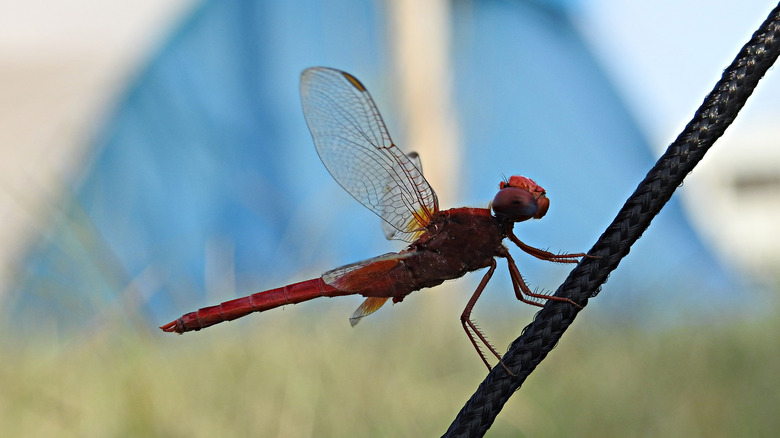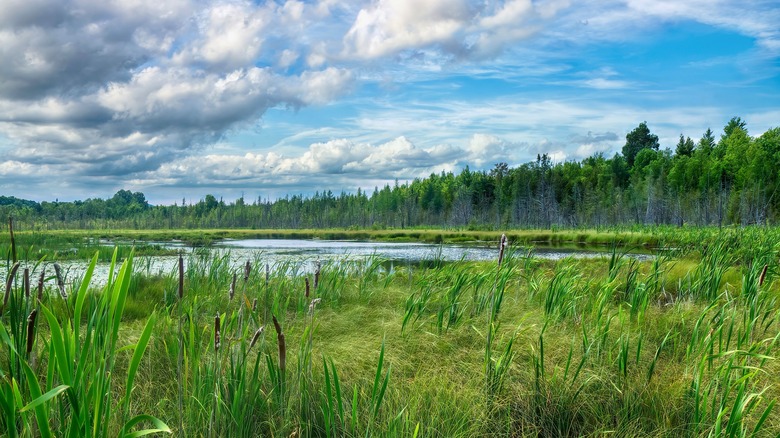Don't Set Up Your Campsite Here If You Want To Keep Bugs Away
Setting up your tent by the shores of a crystal clear lake or little woodland pond is certainly appealing. The sound of the water lapping at the rocks and frogs singing in the night may help you sleep — but itchy bug bites may keep you awake. If you decide to camp near water, especially still water, you should know that your favorite spot is also the favorite spot of many, many species of insects.
One of the greatest joys of exploring the outdoors is getting to experience nature firsthand, but that can mean getting up close and personal with creatures in their natural ecosystems. That might mean being delighted by seeing a brilliant green dragonfly perched on your tentpole, but it could also mean being bitten by mosquitos so that they can use your blood to breed a new generation. Unless you're camping by a lake or pond to get a first-hand understanding of the life cycle of the insects in your region, you may want to move your campsite back a little from the shore. When camping in a damp area, you should always try to find a campsite with a slight incline to avoid stagnant pools of water bringing the insects right to you. If you're lucky enough to be able to find a campsite significantly higher than the water, you may be able to enjoy both a staggering view of the sunrise over the water and a little less itching.
Some of these bugs bite
Mosquitoes have four life stages, and three of them take place in water. If you choose to camp near a pond or lake during warm weather, you may find yourself an unwilling participant in their life cycle.
Mosquito eggs hatch when they hit the water, revealing a small, wriggly larva that lives underwater and may surface to breathe. It develops into a pupa, and finally, emerges from the water as a flying insect. The females will then bite animals or humans for their blood, lay more eggs, and continue the cycle.
Other bugs that live in and around water can also bite. Like mosquitoes, female horseflies use a protein found in blood to make their eggs, and lay their eggs anywhere damp enough, from creeks and ponds to waterfalls and marshes. If you happen to be wading into the water, you might even get a bite from a 3-inch giant water bug, sometimes known as "toe-biters." While they do have large sharp pincer-like mouthparts that definitely hurt if they pierce you, they aren't hunting for your blood and will only bite if you step on them.
Some of these bugs don't bite
While mosquitoes are definitely more than enough reason to avoid setting up your campsite next to a pond on your next trip into the wild, the majority of bugs that will be flying around the water aren't going to bite you. You might find them fascinating and beautiful — or annoying.
Many of the bugs you're likely to see are midges and gnats, otherwise known as the big clouds of tiny bugs that sometimes appear in the air just before the sun sets. These bugs can hatch and grow in just about any water, even a dirty puddle or a gutter, but a pond is the perfect environment for them. While they cannot bite people (or anything else, the adults don't eat at all) if you happen to be camping during the five weeks when they are breeding, you may find your view blocked by huge swarms of tiny flying bugs.
You might also see dragonflies, mayflies, damselflies flying overhead and backswimmers, water boatmen, water striders, and water beetles swimming around on the surface of the lake. None of these will bite or sting you, so as long as you don't have entomophobia, you should be able to share the shore.
These bugs are a good thing (just not for camping)
It can be frustrating to have your camping trip ruined by the sudden appearance of swarms of midges or hungry mosquitoes, but in general, if you're by a pond on a warm summer day and there isn't a bug in sight, that's probably a bad sign. The presence of a wide variety of native bugs around a lake or pond is a sign that the ecosystem is a healthy one.
Aquatic insects and larvae help keep their environment healthy by eating organic matter that settles at the bottom of the pond and serve as a food source for fish. Flying adult insects like gnats and mosquitoes may be irritating to us, but they are eaten by birds, bats, and frogs. Aquatic bugs are also helpful bioindicators, or organisms that can be looked for to see if their environment has become polluted. Unassuming stoneflies are particularly useful to scientists as bioindicators, as they live in clean freshwater streams. The presence of stonefly nymphs in the water is a good sign that the water is safe and unpolluted.
Ponds and lakes make excellent places to explore nature and take a look at the many kinds of insects that thrive there — but unless you don't mind being bitten by hungry mosquitoes, they don't make good campsites.



